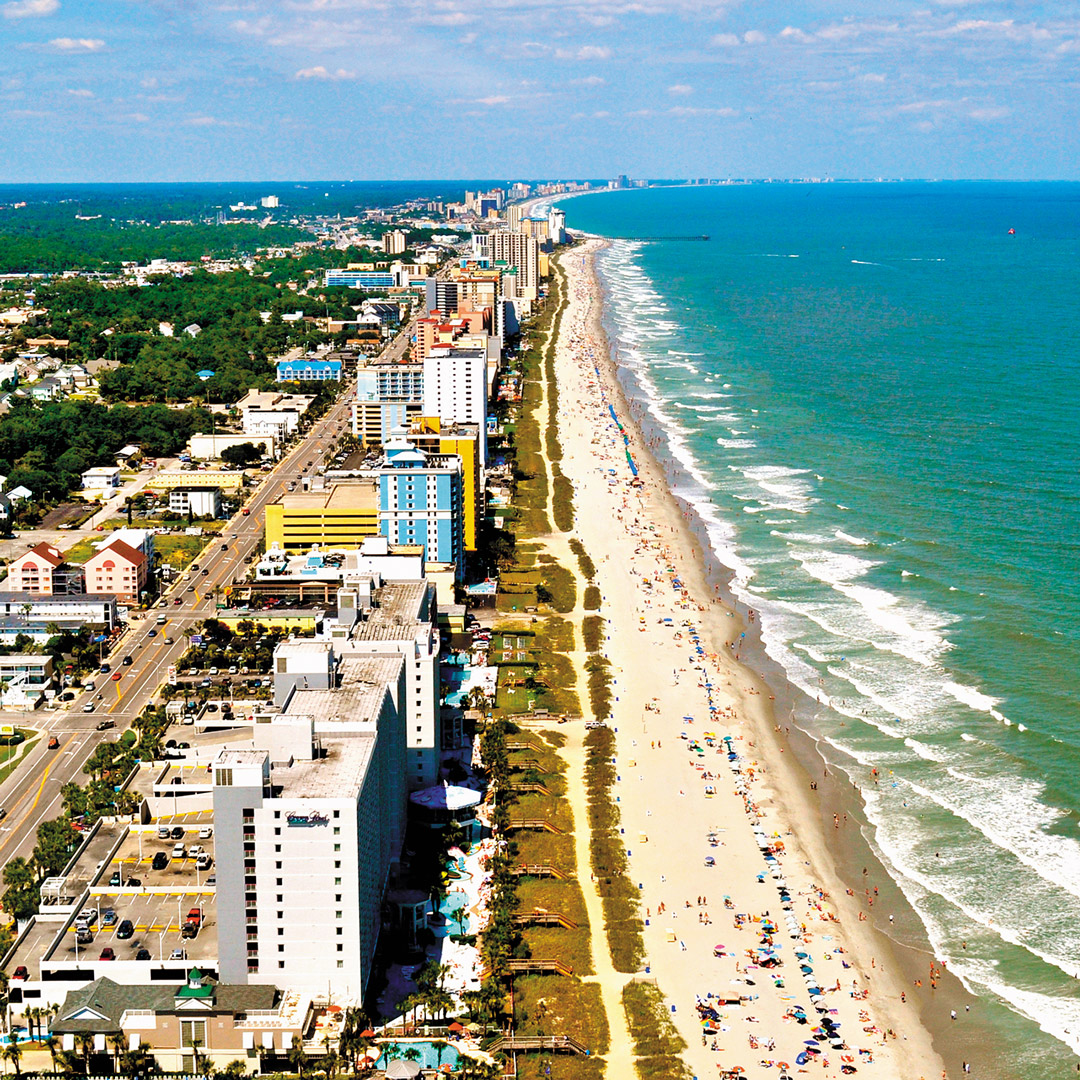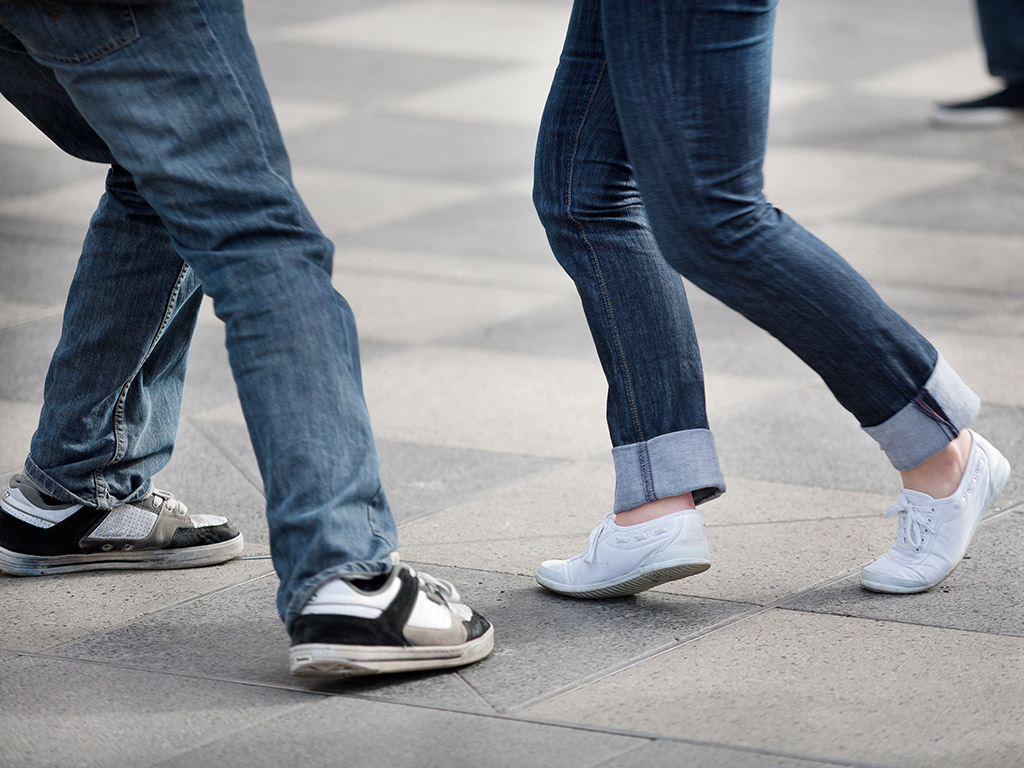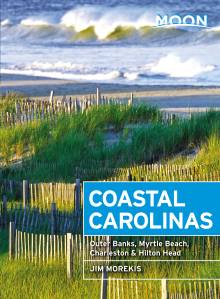The Carolina Shag Dance
In South Carolina, the shag is neither a type of rug nor what Austin Powers does in his spare time. It’s a dance—a smooth, laid-back, happy dance done to that equally smooth, laid-back, happy kind of rhythm and blues called beach music (not to be confused with surf music such as the Beach Boys). The boys twirl the girls while their feet kick and slide around with a minimum of upper-body movement—the better to stay cool in the Carolina heat.
Descended from the Charleston, another indigenous Palmetto State dance, the shag originated on the Strand sometime in the 1930s, when the popular Collegiate Shag was slowed down to the subgenre now called the Carolina Shag. While shag scholars differ as to the exact spawning ground, there’s a consensus that North Myrtle Beach’s Ocean Drive, or “OD” in local patois, became the home of the modern shag sometime in the mid-1940s.

Legend has it that the real shag was born when white teenagers, “jumping the Jim Crow rope” by watching dancers at black nightclubs in the segregated South, brought those moves back to the beach and added their own twists. Indeed, while the shag has always been primarily practiced by white people, many of the leading beach music bands were (and still are) African American.
By the mid-late 1950s, the shag, often called simply “the basic” or “the fas’ dance,” was all the rage with the Strand’s young people, who gathered at beachfront pavilions and in local juke joints called beach clubs, courting each other to the sounds of early beach music greats like the Drifters, the Clovers, and Maurice Williams and the Zodiacs. This is the time period most fondly remembered by today’s shaggers, a time of penny loafers (no socks!), poodle skirts, and 45-rpm records, when the sea breeze was the only air-conditioning.
The shag is practiced today by a graying but devoted cadre of older fans, with a vanguard of younger practitioners keeping the art form alive. A coterie of North Myrtle clubs specializes in the dance, while the area hosts several large-scale gatherings of shag aficionados each year.
To immerse yourself in shag culture, head on up to Ocean Drive Beach in North Myrtle at the intersection of Ocean Boulevard and Main Street and look down at the platters in the sidewalk marking the Shaggers Walk of Fame. Walk a couple of blocks up to the corner of Main Street and Hillside Drive and visit the mecca of beach music stores, Judy’s House of Oldies (300 Main St., 843/249-8649, Mon.-Sat. 9am-6pm). They also sell instructional DVDs.

Shag Clubs
North Myrtle Beach is the nexus of that Carolina-based dance known as the shag. There are several clubs in town that have made a name for themselves as the unofficial “shag clubs” of South Carolina. The two main ones are Duck’s (229 Main St., 843/249-3858) and Fat Harold’s (210 Main St., 843/249-5779). There’s also The Pirate’s Cove (205 Main St., 843/249-8942).
Another fondly regarded spot is the OD Pavilion (91 S. Ocean Blvd., 843/280-0715), aka the Sunset Grill or “Pam’s Palace,” on the same site as the old Roberts Pavilion that was destroyed by 1954’s Hurricane Hazel. Legend has it this was where the shag was born. Also in North Myrtle, the Ocean Drive Beach Club (98 N. Ocean Blvd., 843/249-6460), aka “the OD Lounge,” inside the Ocean Drive Beach and Golf Resort, specializes in shag dancing most days after 4pm. The resort is a focal point of local shag conventions and is even home to the Shaggers Hall of Fame. Also inside the Ocean Drive Resort is another popular shag club, The Spanish Galleon (100 N. Ocean Blvd., 843/249-1047), aka “the Galleon.”
National Shag Dance Championships
The Grand Strand is the birthplace the Carolina shag dance, and each winter for the last 25 years the National Shag Dance Championships (2000 N. Kings Hwy., 843/497-7369, from $15 per night) have been the pinnacle of the art form. Beginning with preliminaries in January, contestants in five age ranges compete for a variety of awards, culminating in the finals the first week in March. The level of professionalism might amaze you—for such a lazy-looking dance, these are serious competitors.
